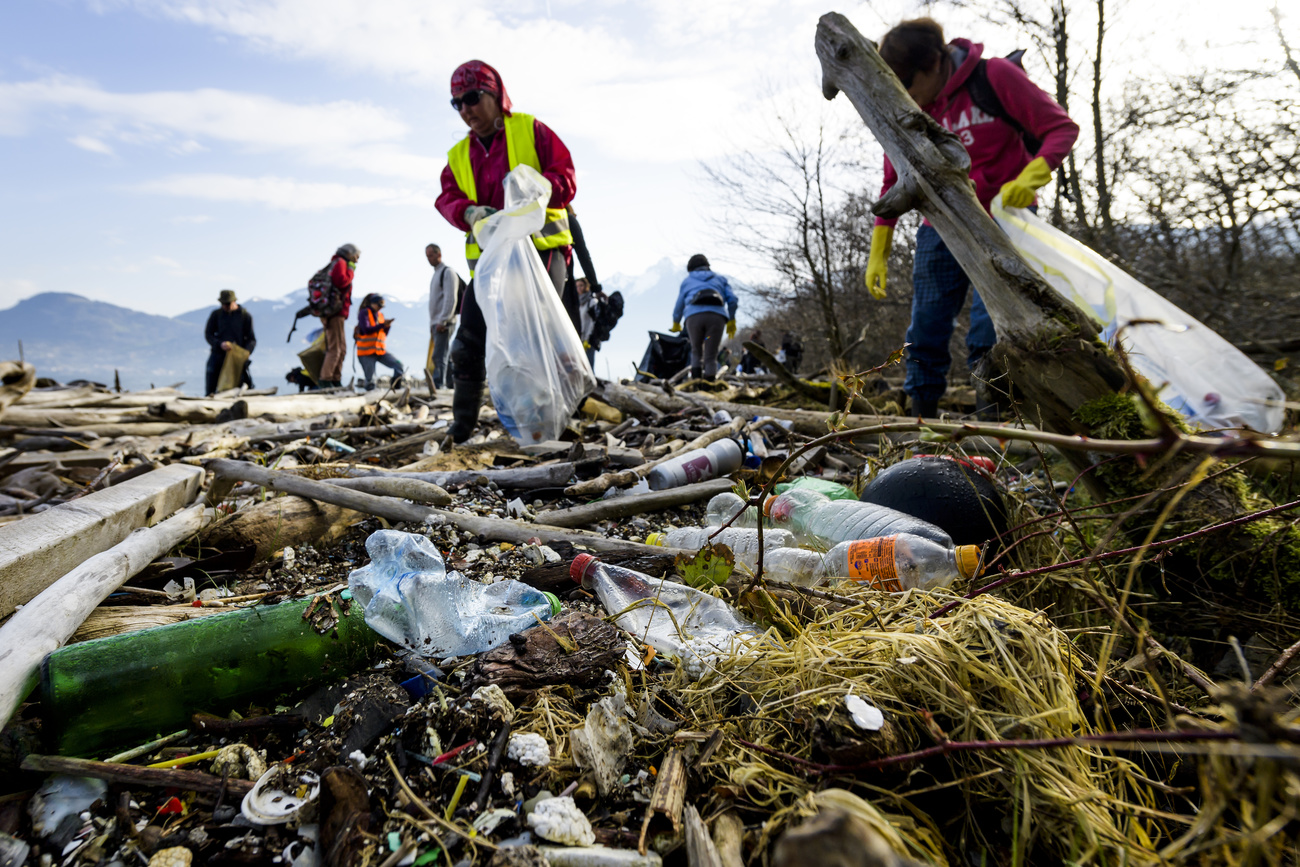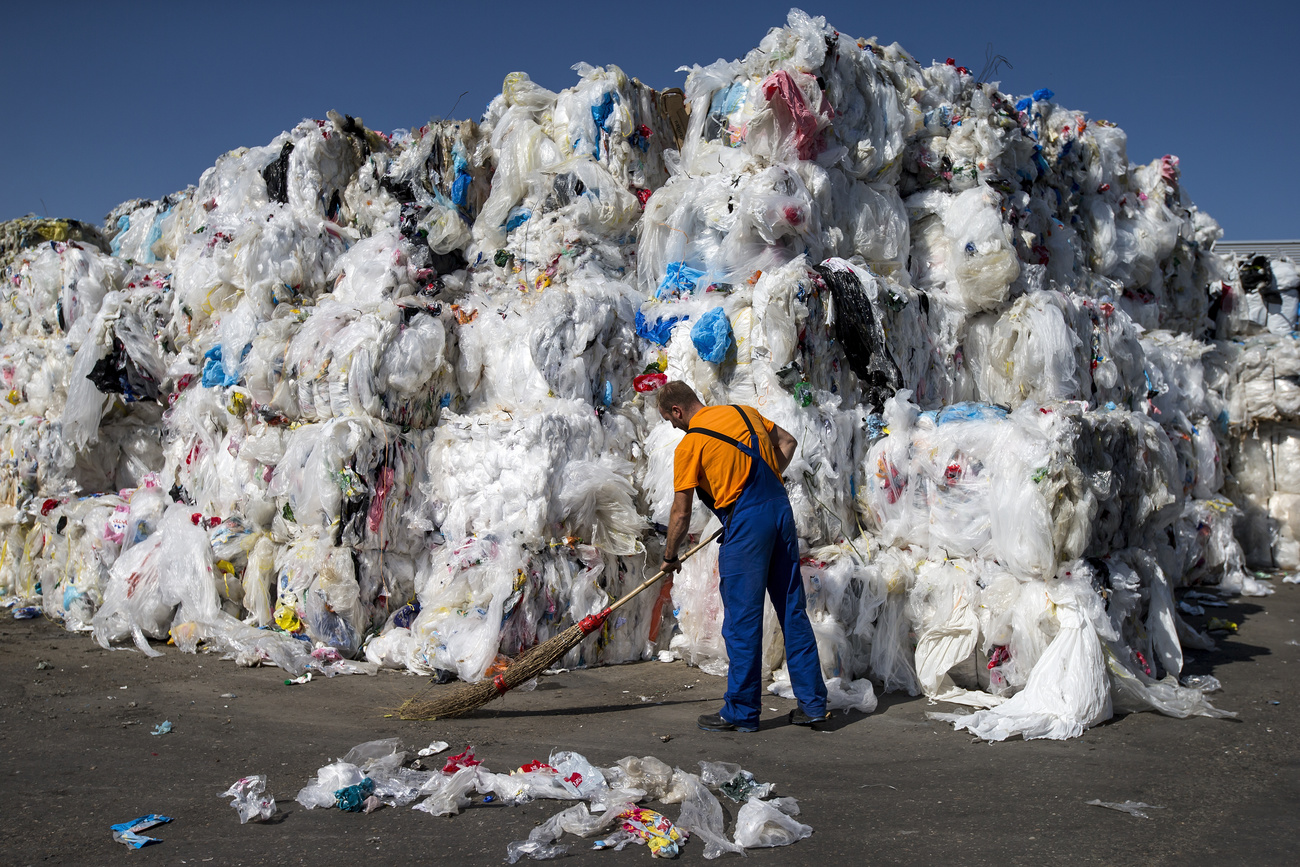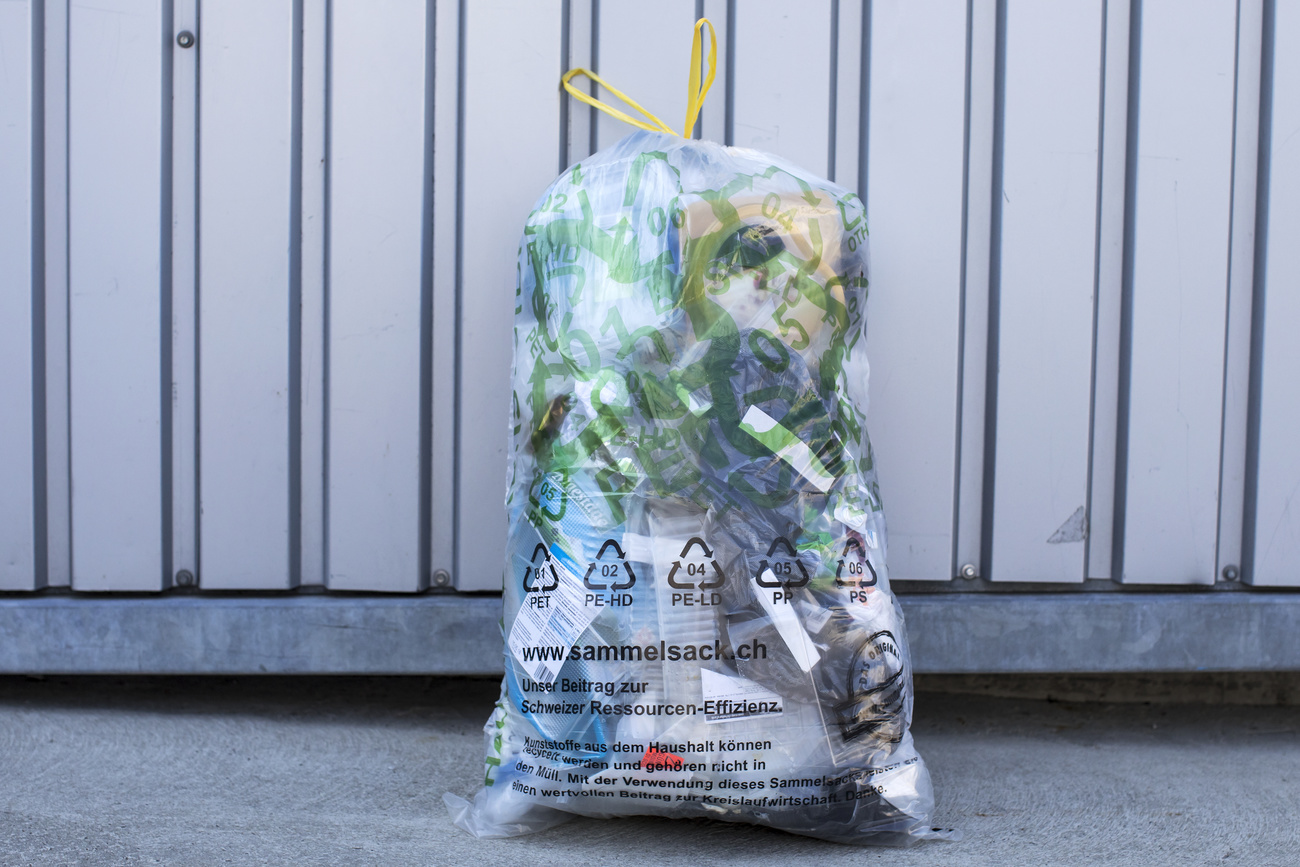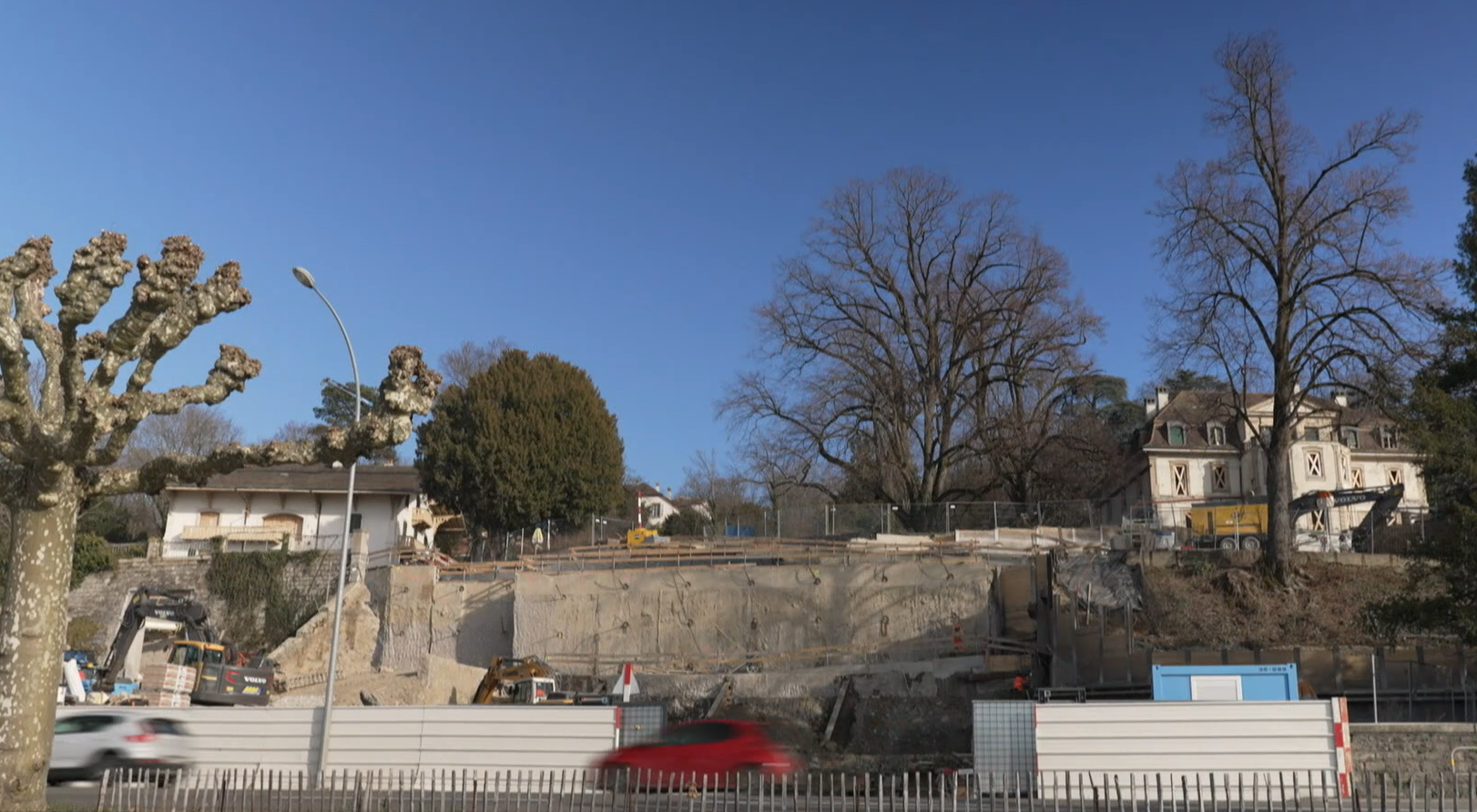Recycling is not the panacea for Switzerland’s plastic addiction

Switzerland consumes a million tonnes of plastic every year, a large proportion of which is incinerated. Only a small amount is recycled. Some 14,000 tonnes end up in the environment. Plastic recycling is increasing, but so is plastic consumption
According to the environmental organisation Pro Natura, Les Grangettes wetland nature reserve, situated on the old Rhône delta at the eastern end of Lake Geneva, serves as a habitat for a multitude of amphibians and insects. The Association for the Safeguarding of Lake Geneva is a joint French and Swiss NGO that combed 25 different parts of the lake’s shoreline and found Les Grangettes to be infested with plastic. “The most ecologically valuable spot on Lake Geneva also happens to be teeming with the most plastic,” it said.
“Swiss plastic consumption is high by international standards, so our country certainly contributes to this increasing environmental problem,” concluded a report by the Federal Council in September 2022.
Data models show that Swiss consumption has increased to around one million tonnes a year, which corresponds to 120 kg of plastic per capita. The Federal Office for the Environment (FOEN) does not provide any other comparative European data.

Switzerland generates 790,000 tonnes of plastic waste – a veritable mountain – almost half of which comes from products used for less than one year. What happens to this waste? More than 80 percent of it is incinerated and converted into energy for district heating networks, among other things. A small proportion is recycled or reused (about 15%). Then you have the 14,000 or so tonnes that go missing every year and find their way into the soil, water and air, according to the Federal Council report. Littering alone accounts for 2,700 tonnes of this total. Almost 50 tonnes of macroplastics end up in our soil due to accidental loss during the transportation stage of the waste disposal process, says the same report. Ten tonnes of cotton buds and other hygiene products are thrown into toilets and then released into surface waters. The total also includes microplastics (see box).

New collection systems
Is there a cure for this problem? “Like PET, which is fully recyclable, we need a national plan for plastic, covering the entire life cycle from production to treatment,” says Jasmine Voide, project manager at the Swiss Recycling Association (SRA). As it currently stands, the extremely complex nature of plastics complicates or sometimes prevents recycling. But plastic also has unique properties, says the SRA. These help to protect food, for example.
According to Greenpeace, whenever we recycle a plastic product made from toxic chemicals, their harmful substances can end up in the recycled plastic. Nevertheless, new collection systems for non-PET plastic now allow the processing of items like milk cartons, bottles and crisp packets.
nnoGruppe, based in Thurgau, says it collected more than 7,000 tonnes of plastic in 2022 across a network of 500 municipalities that are subsidising the collection of household plastic waste. The company, whose customers include Migros and Coop, has a recycling rate of around 63 percent. The rubbish is collected in prepaid waste bags and sent to a sorting and treatment plant in Austria, which turns the plastic back into plastic granules to be sold on to customers in Europe. InnoGruppe intends to build a plant in Thurgau and collect some 20,000 tonnes of plastic every year, says company spokesperson Patrik Ettlin. Meanwhile, Migros has confirmed it collected 3,200 tonnes of (non-PET) plastic bottles and 500 tonnes of plastic bags in 2022.
Growth in consumption
“Plastic recycling is increasing, but so is plastic consumption,” says Florian Breider, director of the Central Environmental Laboratory at the Swiss Federal Institute of Technology Lausanne (EPFL). “Furthermore, the whole process burns energy.” According to FOEN, Switzerland’s plastic carbon footprint accounts for around five percent of its total carbon footprint. “The pullovers, watering cans and other items into which our plastic bottles are recycled cannot be recycled again,” writes Jacques Exbalin, who has published a book on combating plastic waste. Greenpeace questions the fundamental rationale for taking recycling into the private sector. Demand for plastic to feed the recycling process will fuel further plastic production, it says, not least because major oil companies are starting to diversify towards plastics as the world moves towards electric transportation. The world produces more than 400 million tonnes of plastic every year. Florian Breider: “It is wrong to think that everything will be OK if we separate our plastic waste. We need to be producing things that are designed to last for as long as possible, and are as easy as possible to recycle.” Breider laments the huge waste of single-use plastics, and calls mineral water bottles “pointless” given how clean Swiss tap water is. Greenpeace believes measures to improve waste collection simply amount to greenwashing. It calls for a transition to reusable packaging systems.
In Switzerland, tyre abrasion is the largest source of plastics entering the environment (8,900 tonnes a year), according to FOEN. Around 100 tonnes of microplastics also enters the soil via compost every year. The washing and wearing of synthetic clothing is a recognised source of microplastics in the environment, as are cosmetic products, from which three tonnes of plastic microbeads are released annually. Yet it is almost impossible to eliminate microplastic waste – and our wildlife is paying the price. A 2014 study found small amounts of microplastic in the digestive tracts of birds and fish in Switzerland. The effect of plastic on human health is still unknown, says Florian Breider, who is participating in a study to determine how much plastic we actually have in our lungs. Another problem is that plastics contain additives designed to impart certain properties, such as making them softer. But manufacturers only open up to customers on this issue if there is marketing benefit to be gained from doing so, adds Breider. “Trumpeting the virtues of BPA-free dummies for babies is one example.” (SH)
This article was first published in the Swiss ReviewExternal link

In compliance with the JTI standards
More: SWI swissinfo.ch certified by the Journalism Trust Initiative








You can find an overview of ongoing debates with our journalists here . Please join us!
If you want to start a conversation about a topic raised in this article or want to report factual errors, email us at english@swissinfo.ch.